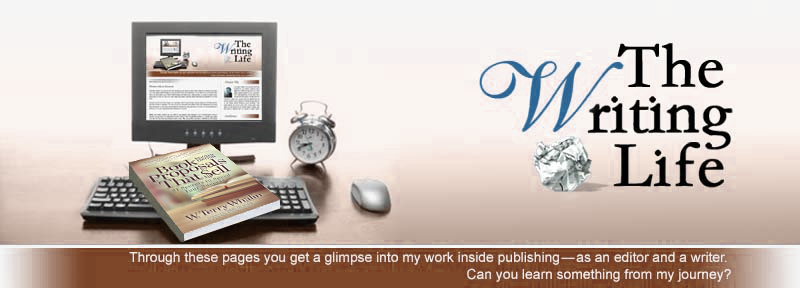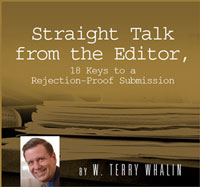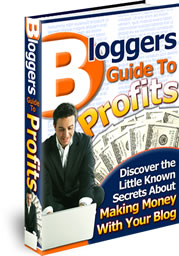Late last week, Brandilyn Collins asked me to answer a question from one of her blog readers. This reader referred to my Book Proposals That Sell and knew a nonfiction proposal should have a marketing plan. She wondered if a fiction proposal should also have a marketing plan and what would be in such a plan. I wrote the answer and sent it over the weekend so Brandilyn could post it today. With some slight revisions, I’m posting the same entry here. Some of this information I wrote in previous entries but I also include some additional twists (because I continually learn more about this topic):
Does a fiction book needs a marketing plan to catch a publisher’s attention? It’s a good question. Let me give you a bit of my background so you see why I’m answering this question. I’ve published more than 60 nonfiction books and I’ve been a book acquisitions editor for the last four years. While I had written a lot of books, it was a complete revelation when I became a book editor. I began to understand the economics involved and it’s important for every author to understand these dynamics—whether they write fiction or nonfiction. I provide a bit of this information in my book, Book Proposals That Sell, 21 Secrets To Speed Your Success. While somewhat focused on nonfiction, you can learn a lot about the publishing process no matter what you write from this book.
Here’s the financial information that I didn’t understand (since I’ve never self-published): for every book (fiction or nonfiction), a publisher is going to spend $50,000 to $100,000 (real dollars) to take your manuscript and turn it into a finished book. These numbers are with a modest advance to the author (say $5,000) and zero marketing dollars. These costs are production, cover design, editorial work, etc. on your book. Publishers receive thousands of submissions from would-be authors. I’m the part-time Fiction Acquisitions Editor at Howard Publishing. I’m looking for six to eight full-length novels a year—and I’ve received over 250 submissions from individuals and literary agents. I’ve rejected some quality fiction because of the volume and limited spots. And that is just my story so imagine these numbers multiplied on other editor’s desks. And if you read Book Proposals That Sell, you will see that editors do a lot more than read manuscripts.
Let’s pretend for a minute that you are the editor and have to wade through these volumes of material to find the books for your list. You have two manuscripts. BotIh manuscripts are excellent, fascinating stories. One manuscript has a marketing plan and the other doesn’t. As the editor, you will be held accountable for your choices (within the publishing house). It’s a business to sell books. Which manuscript will you choose to champion to the other editors, the publishing executives (sales, marketing, etc.)? Editors risk for their authors. Your challenge is to prove to be worthy (actually more than worthy) of this risk.
Later this month, at the Glorieta Christian Writers Conference, I’m teaching an hour workshop, What A Publisher Looks for in a New Book Idea. Whether fiction or nonfiction, I’m going to focus on how you can make your book stand out for the editor. While I’m not going to give you the contents of my workshop, let me give you several ideas and resources to figure it out. Everything that I’m going to write is based on the assumption you’ve learned your writing craft and produced an excellent, page-turning novel that is appropriate for a particular publisher. A big part of you may resist even creating a marketing plan. Isn’t that why you go to a publisher instead of publishing it yourself? No, you go to a publisher to use their marketing efforts in combination with your efforts to sell more books (and to have your books in the bookstore—a closed system for self-publishing—which is another discussion). Publishers love authors who “get it” and understand they need to roll up their sleeves and take a bit of their energy to market the books to their own network. Also publishers always want to do more for their books especially when they release. Yet they have 20 books to shepherd through this process—and you have a single book. Who is going to be more passionate about the book? It’s you as the author—well show a little of that passion in your marketing plans for your book.
You need to be reading some marketing books and here’s a few titles to get you started: Beyond the Bookstore, How to Sell More Books Profitably to Non-Bookstore Markets by Brian Jud. Over half of the books sold are sold outside of the bookstore. This book includes a CD to help you understand these markets and create your own plan. Please don’t say you are willing to do radio interviews or appear on Oprah (yes, I’ve seen new authors put this repeatedly as their marketing plans and it reveals you know nothing about selling books. Of course you will do radio interviews and appear on Oprah (however unlikely it is to appear on Oprah). Publicize Your Book!, An Insider’s Guide to Getting Your Book the Attention It Deserves by Jacqueline Deval. Several years ago I met Jacqueline at a conference in New York City. She’s a publisher at Hearst Books and has led numerous successful book campaigns as a Director of Publicity. She knows proactive authors help sell books and has wise advice about how to be proactive but not high maintenance (something publishers avoid like the plague). The techniques in this book will give you practical ideas for your marketing plan. You have a network and the question is: how will you tap it and use it to sell books? Check out PyroMarketing by Greg Stielstra, Harper Business. This book is brand new and will help you see how you can stir people to purchase your book and why mass marketing techniques are ineffective. To get a taste of this book, read this free introduction (I got from Greg—who is the new Vice President of Marketing Christian Books at Thomas Nelson Publishers, the ninth largest publisher in the world). Next take a look at bestselling fiction author, Debbie Macomber, who won a Quill Award last week in the romance category. She has over 60 million novels in print. Bounce the ideas of PyroMarketing (particularly the fourth point of Pyromarketing: saving the coals or saving the data) against this page in her guestbook. I heard a “rumor” that Debbie has over a million names on her own database. Look at the information she is collecting on her guestbook from each person—including your bookstore information. See why she beat mega-bestselling author Nora Roberts (who had two romances nominated for the Quill Award)? Debbie understands what most beginning (and many published authors) don’t understand.
Finally can you bring your publisher a deal from the beginning that will sell at least 5,000 books? It’s not a crazy question since 70% of special sales are something that the author begins. For some creative ideas, check out Jerry Jenkins’ site (not the Left Behind author but another Jerry Jenkins). Most of these ideas are nonfiction but put your own spin on it. One quick completely fictious example, your novel has a main character with an eating disorder who through the course of the book, gets help and is on the road to recovery. Can you open the door for your publisher to cut a deal with New Life Clinics to purchase 100,000 (wild number maybe 5,000) copies of your novel to give to their patients? Some of those patients will never read a how-to nonfiction book but will consume your novel and get lots of ideas from it for their own life. New Life could have their own cover or a special explanation letter in the front or any number of other special things to make it their own book. Now these books are not money makers for the publisher or the author. They are heavily discounted but they spur interest and people talking about the book and they do stimulate bookstore sales. See how you’ve distinguished your book from anything else on the editor’s desk?
I’ve gone on too long but I’m passionate to tell authors about this process of creating excellent book proposals. Publishers are looking for true partners in the process. A marketing plan shows that you are actively going to enter into the process of selling books. Yes, publishers are looking for excellent storytellers but they need authors who care about selling books.





















